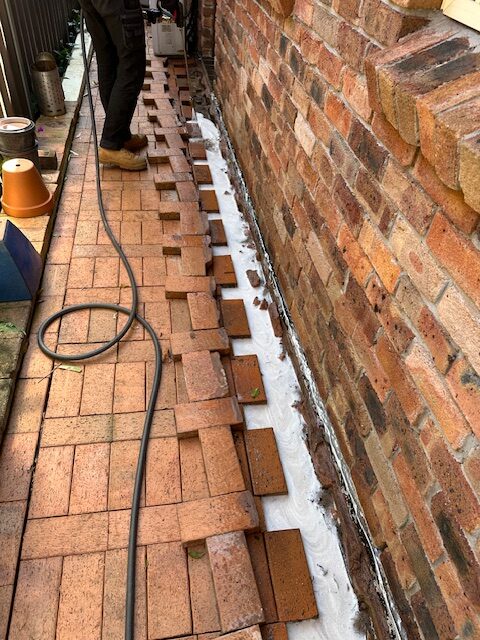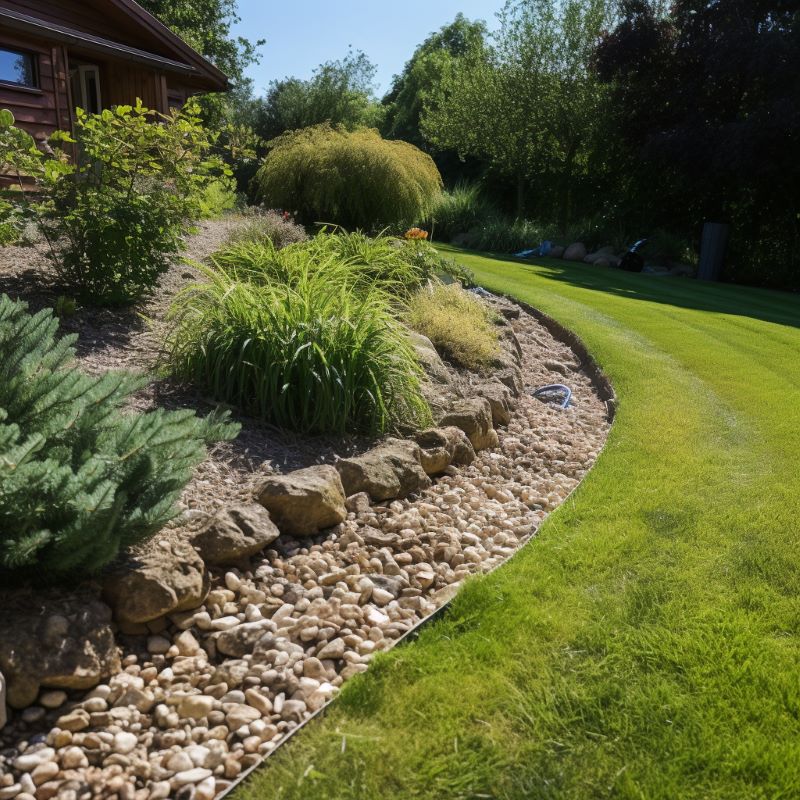Landscaping serves as an impactful method to enhance the visual appeal and market value of your home. However, it requires careful planning to maintain the integrity of crucial termite barriers. These protective systems are vital for defending your property against destructive termite infestations. Unfortunately, certain landscaping choices and maintenance practices can inadvertently undermine these barriers, diminishing their effectiveness. This comprehensive guide provides you with essential strategies and insights designed to ensure that your landscaping decisions do not jeopardize your termite protection systems. By adopting proactive measures, you can cultivate a stunning landscape while preserving a termite-free living environment around your home.
Understanding the Critical Role of Termite Barriers in Home Protection
Termite barriers are specialized systems, either physical or chemical, designed to be strategically placed around or beneath your home to prevent termites from penetrating your property. Every homeowner should prioritize the implementation of a comprehensive termite management system, and understanding the specific type in place is crucial for effective property maintenance. A simple way to verify this is to check the documentation located in your electrical meter box. These barriers are essential in protecting structures, particularly in areas like Sydney’s Hills District, where termite activity is significantly high, underscoring the need for vigilant protective measures.
- Physical Barriers: Made from resilient materials like stainless steel mesh or graded stones, these barriers are installed beneath a building to effectively prevent termites from tunneling through and endangering the structure.
- Chemical Barriers: This method involves applying liquid termiticides to the soil surrounding a structure, establishing a treated zone that deters or eliminates termites from accessing your home, thus ensuring ongoing protection.

Identifying Landscaping Practices That Can Weaken Termite Barriers
Various common landscaping practices can unintentionally damage or undermine the effectiveness of termite barriers, leading to vulnerabilities that may result in severe infestations. Recognizing and understanding these practices is essential for maintaining robust protection against termites. By being aware of these potential pitfalls, homeowners can proactively implement measures to safeguard their properties.
1. Planting in Close Proximity to Your Home
When plants, shrubs, or trees are positioned too near your house, they can introduce a range of issues:
- The roots may penetrate physical barriers or disturb the treated soil in chemical barriers, significantly reducing their effectiveness.
- Dense vegetation can retain moisture near the building’s foundation, creating a welcoming environment for termites to thrive, potentially leading to infestations.
2. Introducing New Soil or Mulch
Adding layers of soil or mulch around the foundation can create a bridge over chemical barriers, enabling termites to bypass these crucial protections. Organic mulch poses particular challenges as it can provide both food and shelter for termites, making it an especially attractive habitat for these pests.
3. Hardscaping and Paving Projects
The installation of paving, patios, or retaining walls close to your property can disrupt existing termite barriers. The excavation and soil movement required for these projects may compromise the chemical seal or create gaps in physical barriers, consequently increasing vulnerabilities and making your home more susceptible to infestations.
4. Considerations for Irrigation Systems
Poorly designed or overly watered irrigation systems can saturate the soil surrounding your foundation. This not only dilutes the effectiveness of termiticides in chemical barriers but also creates a favorable environment for termite proliferation, heightening the risk of infestations.

Effective Landscaping Techniques to Safeguard Termite Barriers
1. Maintain Adequate Clearance from Your Home
- Ensure a minimum distance of 50 cm between plants and trees and your home’s foundation, creating a safe buffer zone that protects against termite access.
- Select smaller, non-invasive plant varieties that are less likely to develop extensive root systems capable of interfering with your barriers, thereby ensuring that your protective systems remain intact.
2. Opt for Termite-Resistant Mulch Materials
- Choose inorganic mulches such as gravel or stone, or consider using termite-resistant materials like cedar or cypress chips to minimize risk and deter termite activity.
- Limit mulch piles to a maximum height of 5 cm and maintain at least 15 cm distance from the foundation to reduce moisture retention and discourage termite attraction.
3. Avoid Disrupting Barriers During Landscaping Activities
- Consult with a professional before undertaking any digging or installing landscaping features near your home to prevent disturbing the termite barriers or termite baits.
- If soil alterations are necessary, it’s advisable to have the barrier reinspected and potentially retreated to ensure ongoing protection against termites and maintain the integrity of your defenses.
4. Thoughtful Design Practices
- Position irrigation systems away from the foundation to prevent excessive moisture accumulation near the barrier, which can attract termites and escalate the risk of infestations.
- Install root barriers for larger trees to prevent roots from encroaching on the termite barrier, preventing potential damage that could compromise the structure.
- Be cautious of termite reticulation pipes to avoid damaging them during landscaping tasks, ensuring that your protection systems remain effective.
Immediate Actions to Take if Your Termite Barrier is Compromised
If landscaping activities or natural events have disrupted your termite barrier, acting swiftly is vital to protect your home from potential infestations:
- Schedule a Professional Inspection: A thorough termite inspection is critical to identify vulnerabilities and determine if termites have breached your protective barriers, enabling prompt remediation.
- Reinforce Your Barrier: Based on inspection findings, physical barriers may need repairs, while chemical barriers might require retreatment or a top-up to restore their effectiveness and ensure ongoing protection.
- Implement Regular Monitoring: Routine inspections for termites are essential to confirm that your barrier remains intact and your property stays protected from infestations, allowing you to identify potential issues early.
Strategic Landscaping Solutions to Enhance Termite Protection
By employing careful planning and strategic design, your landscaping can effectively bolster your termite protection efforts and reinforce your home’s defenses:
- Incorporate gravel paths or decorative stones along the foundation to create a dry zone that deters termite activity and minimizes moisture retention.
- Utilize raised garden beds with adequate clearance from the house to reduce moisture accumulation near the foundation, helping to keep termites at bay.
- Regularly prune vegetation to ensure proper airflow and decrease moisture buildup, creating an inhospitable environment for termites, thus enhancing your home’s defenses.

Thoughtful landscaping can be designed to enhance, rather than compromise, your termite barriers. By understanding how different landscape designs impact termite protection, you can create a beautiful and pest-free home environment. For expert termite advice or assistance in maintaining your barriers, contact our knowledgeable team today. Let us collaborate with you to secure your home while you create the landscape of your dreams, ensuring your property remains safe and visually appealing.
The Article: Termite Barriers for Effective Landscaping Solutions first appeared on https://writebuff.com.
The Article Termite Barriers: Essential Solutions for Landscaping Was Found On https://limitsofstrategy.com
The Article Termite Barriers: Key Solutions for Your Landscape Design First Appeared ON
: https://ad4sc.com


I find the interplay between landscaping and termite barriers really fascinating, especially considering how often we overlook the synergy—or, in some cases, the tensions—between aesthetic choices and home protection. When planning my garden, I was all about creating that perfect outdoor haven—lots of color, some shade for lounging, and inviting layouts for entertaining guests. It didn’t occur to me until later that my dream landscape could potentially impact those all-important termite barriers.
I totally get where you’re coming from. When we’re diving into garden planning, it’s easy to get swept away in the vision of that outdoor haven. The colors popping off the flowers, the coziness of shaded spots, and the layout that welcomes friends over—it all sounds like a dream. It’s interesting how the beauty we create can sometimes come with hidden challenges, especially when it comes to something like termite barriers.
“I completely agree, and it’s crucial to strike that balance! If you’re interested in exploring how to create a beautiful garden while keeping your home protected, check out this insightful guide that dives deeper into the harmony of landscaping and termite prevention.”
https://oldicom.net/webilaro
Your insights on the interplay between landscaping and termite barriers resonate deeply with me. It’s fascinating how the aesthetics of our homes can sometimes come at odds with crucial maintenance considerations. When I first began landscaping my yard, I focused heavily on creating a beautiful space with vibrant flowers and lush greenery, but I quickly learned that some of my choices, like planting too close to the foundation, could compromise the integrity of my termite barriers.
The insights you’ve shared on the delicate balance between landscaping and termite protection truly resonate. It’s fascinating how something as aesthetically pleasing as a garden can have implications far beyond just visual appeal. This intersection of beauty and practicality really highlights the importance of informed decision-making in home maintenance.